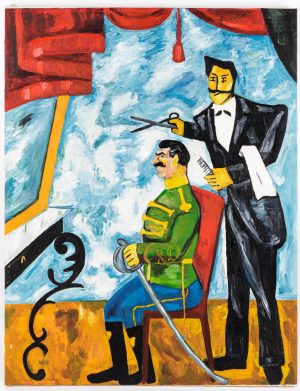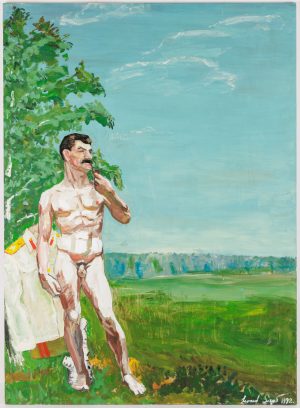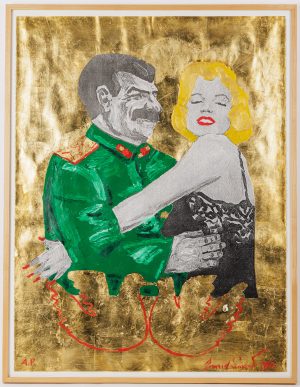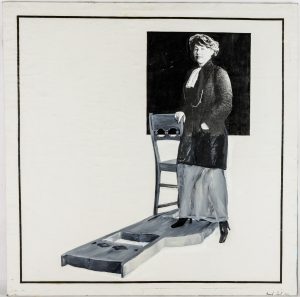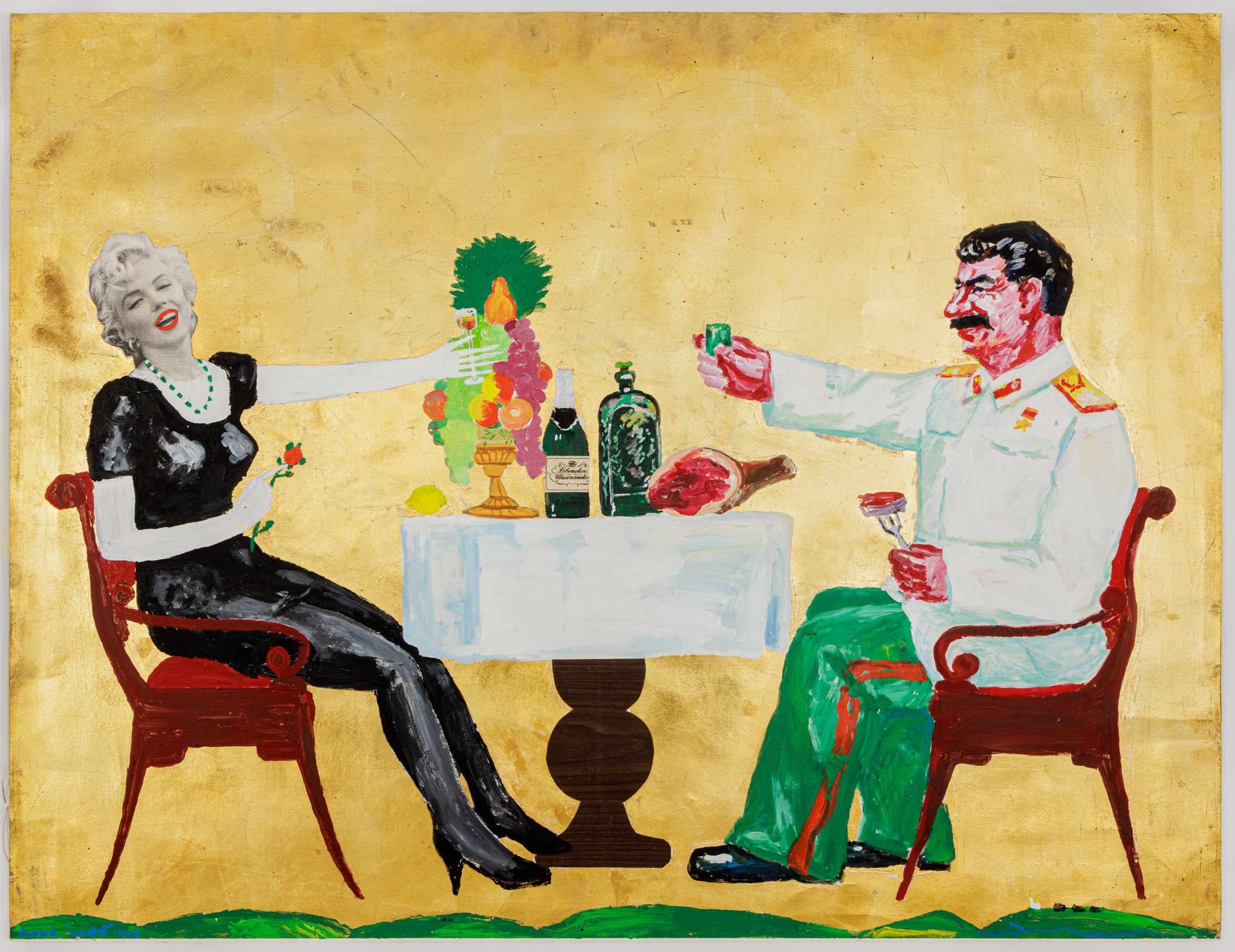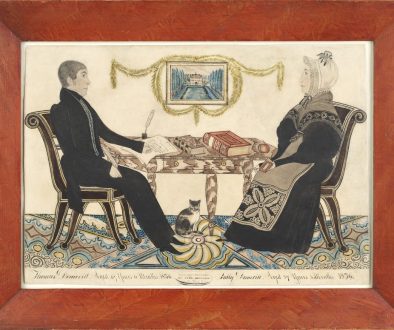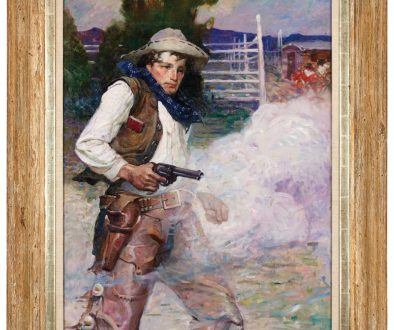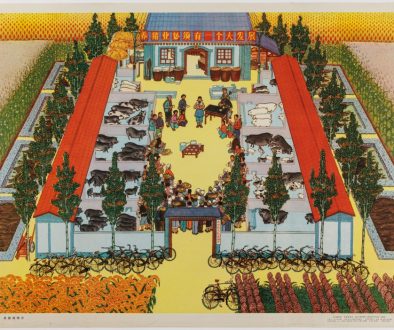Sokov & Stalin
Vladimir Putin is attempting to revive the legacy of Stalin as a wartime leader. He has unveiled more than one hundred new statues of the brutal dictator during his twenty-five-year reign, the most recent in a Moscow metro station. The rehabilitation of Stalin legitimizes Putin’s authoritarian regime and his foreign policy. In this light, the work of Leonid Sokov continues to be as relevant as ever. Whether critiquing Stalin, the Soviet regime, Western consumerism, or the Russian reaction to the demise of the Soviet Union, Sokov’s art cuts to the matters of cultural expression and values.
Putin’s new statues depict Stalin as a father figure and strong leader, handsome, friendly, and pragmatic. Stalin, from his assumption of the office of General Secretary of the Communist Party in 1922 until his death in 1953, required all portraits of him to be approved by the State. This effectively controlled Stalin’s image, due to the abolition of private trade, the State was also the only consumer of art. The Soviet authorities required that Stalin be made taller, and better-looking. Sokov’s images of Stalin hew closer to reality and simultaneously expose other facets of the hypocrisy and authoritarianism of his deeply contested legacy.
Lot 240 Stalin/David Underbirch parodies the approved images of Stalin, and is not too far from how he is depicted (only clothed) in his new statue in Moscow’s Taganskaya metro station. The artistic achievements of the Renaissance were a far cry from the repression of artistic expression in Stalinist Russia. Stalin imposed the artistic style Socialist Realism, in which art had to serve as propaganda promoting communism and the Soviet state.
Lot 304 M. Larianov’s Paint and Stalin’s Head shows a bougie Stalin at the barber’s. Stalin disliked outward displays of wealth, and his mythology portrays him as an ascetic, but he was hugely wealthy, with unlimited access to the advantages of his office, all provided for him by the State. He lived a more lavish lifestyle than anyone in the Soviet Union.
Lot 220 Stalin and Marilyn (Lovebirds) is a favorite theme, Stalin lustfully groping for Marilyn Monroe, who is symbolic of everything Stalin professed to despise.
Lot 164 Stalin and Marilyn At The Table is a scene in which Marilyn Monroe (representing the U.S.A.) flirts across the table with an overindulging Stalin. According to Andrei Kovalev, the mischievous Sokov “once expressed the hope that a hundred years from now no one would be able to recall if Stalin and Monroe had ever actually met.”
Lot 167 Ermolaeva With Chair Of Leonid Sokov depicts the brilliant avante garde artist Vera Ermolaeva. Ermolaeva, an “anti-Soviet element”, was executed by a firing squad in 1937, after several years of imprisonment in gulag camps, a victim of Stalin’s Great Terror.
Sokov’s artworks are not just a record of a moment in time, but a lasting commentary on Soviet repression, Russian nationalism, Western consumerism, and the battle for self-determination and the soul of the Russian people. Pook & Pook is honored to present one of the largest collections of his works ever to be exhibited or auctioned. Please join us to view these and many other important artworks in person Monday and Tuesday, July 14th and 15th, and online for bidding July 16th.
by: Cynthia Beech Lawrence
